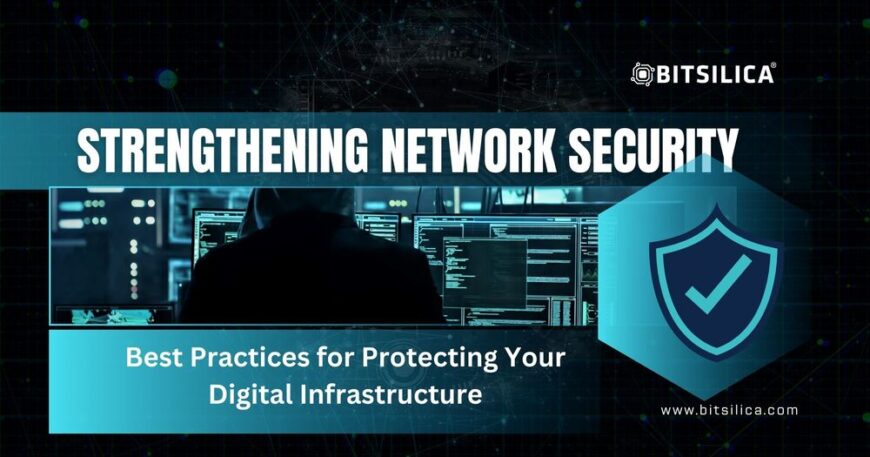Strengthening Network Security: Best Practices for Protecting Your Digital Infrastructure
Introduction
Network security is essential for protecting an organization’s digital infrastructure from unauthorized access, data breaches, and other cyber threats. As networks become more complex and interconnected, robust security measures are needed to safeguard sensitive information and ensure operational continuity. This blog post will explore best practices for enhancing network security, with real-world examples to illustrate their importance.
Understanding Network Security
Network security involves implementing measures to protect the integrity, confidentiality, and availability of data and resources within a network. This includes preventing unauthorized access, detecting potential threats, and responding to security incidents.
Key Components of Network Security:
• Access Control: Restricting access to network resources to authorized users.
• Intrusion Detection and Prevention: Monitoring network traffic for signs of malicious activity.
• Data Encryption: Protecting data in transit and at rest from unauthorized access.
Example: In 2017, the WannaCry ransomware attack exploited vulnerabilities in network security, affecting over 200,000 computers worldwide. This incident underscored the need for comprehensive network security measures.
Implementing Strong Access Controls
Access controls ensure that only authorized individuals can access network resources, reducing the risk of unauthorized access and data breaches.
Best Practices:
• Role-Based Access Control (RBAC): Assign access permissions based on users’ roles within the organization.
• Least Privilege Principle: Grant users the minimum level of access necessary to perform their duties.
• Multi-Factor Authentication (MFA): Require MFA for accessing critical network resources.
Example: A financial institution reduced unauthorized access incidents by 50% after implementing RBAC and MFA for all network access.
Using Firewalls and Intrusion Detection Systems
Firewalls and intrusion detection systems (IDS) are essential for monitoring and controlling incoming and outgoing network traffic.
Best Practices:
• Firewalls: Deploy firewalls to create a barrier between trusted and untrusted networks, blocking unauthorized traffic.
• Intrusion Detection and Prevention Systems (IDPS): Use IDPS to detect and respond to suspicious activities in real-time.
• Regular Updates: Keep firewalls and IDPS up to date with the latest security patches and threat intelligence.
Example: In 2018, a healthcare provider thwarted a major cyber attack by using a combination of firewalls and IDPS to detect and block malicious traffic.
Securing Wireless Networks
Wireless networks are particularly vulnerable to unauthorized access and eavesdropping, making it essential to implement strong security measures.
Best Practices:
• WPA3 Encryption: Use WPA3 encryption to secure wireless networks and protect data in transit.
• Hidden SSIDs: Hide the network’s SSID (Service Set Identifier) to make it less visible to unauthorized users.
• Guest Networks: Set up separate guest networks to prevent unauthorized access to the main network.
Example: A university improved its network security by upgrading to WPA3 encryption and implementing separate guest networks, reducing unauthorized access attempts.
Regularly Updating and Patching Network Devices
Keeping network devices up to date with the latest firmware and security patches is crucial for protecting against known vulnerabilities.
Best Practices:
• Automatic Updates: Enable automatic updates for routers, switches, and other network devices.
• Patch Management: Implement a patch management process to ensure timely application of security patches.
• Vulnerability Scanning: Regularly scan network devices for vulnerabilities and address any issues promptly.
Example: The 2017 Equifax breach was partly due to an unpatched vulnerability in a web application framework, highlighting the importance of regular updates and patch management.
Encrypting Data in Transit
Encrypting data in transit protects sensitive information from being intercepted and accessed by unauthorized parties.
Best Practices:
• TLS/SSL: Use Transport Layer Security (TLS) or Secure Sockets Layer (SSL) to encrypt data transmitted over the internet.
• VPNs: Use Virtual Private Networks (VPNs) to create secure connections for remote access and sensitive data transfers.
• Encrypted Email: Ensure that emails containing sensitive information are encrypted.
Example: A law firm implemented TLS/SSL encryption for all client communications, significantly reducing the risk of data breaches during data transmission.
Monitoring and Logging
Network Activity Continuous monitoring and logging of network activity help detect and respond to potential security incidents in real-time.
Best Practices:
• Network Monitoring Tools: Use tools to continuously monitor network traffic for anomalies and potential threats.
• Log Management: Maintain detailed logs of network activity and regularly review them for signs of suspicious behavior.
• Security Information and Event Management (SIEM): Implement SIEM solutions to aggregate and analyze log data, providing real-time alerts and insights.
Example: In 2020, a tech company detected a potential data breach early by using SIEM solutions to monitor and analyze network activity, allowing for a swift response and mitigation.
Educating Employees on Network Security
Training employees on network security best practices ensures they understand how to protect the network and recognize potential threats.
Best Practices:
• Regular Training Sessions: Conduct ongoing training sessions on network security topics.
• Phishing Simulations: Use phishing simulations to teach employees how to recognize and avoid phishing attacks.
• Clear Policies and Guidelines: Develop and communicate clear network security policies and guidelines.
Example: A manufacturing company reduced network security incidents by 40% after implementing regular training and phishing simulations for employees.
Conclusion
Network security is critical for protecting an organization’s digital infrastructure from cyber threats. By implementing strong access controls, using firewalls and intrusion detection systems, securing wireless networks, regularly updating network devices, encrypting data in transit, monitoring network activity, and educating employees, organizations can significantly enhance their network security posture. Stay vigilant and proactive in securing your network to protect against evolving cyber threats.





